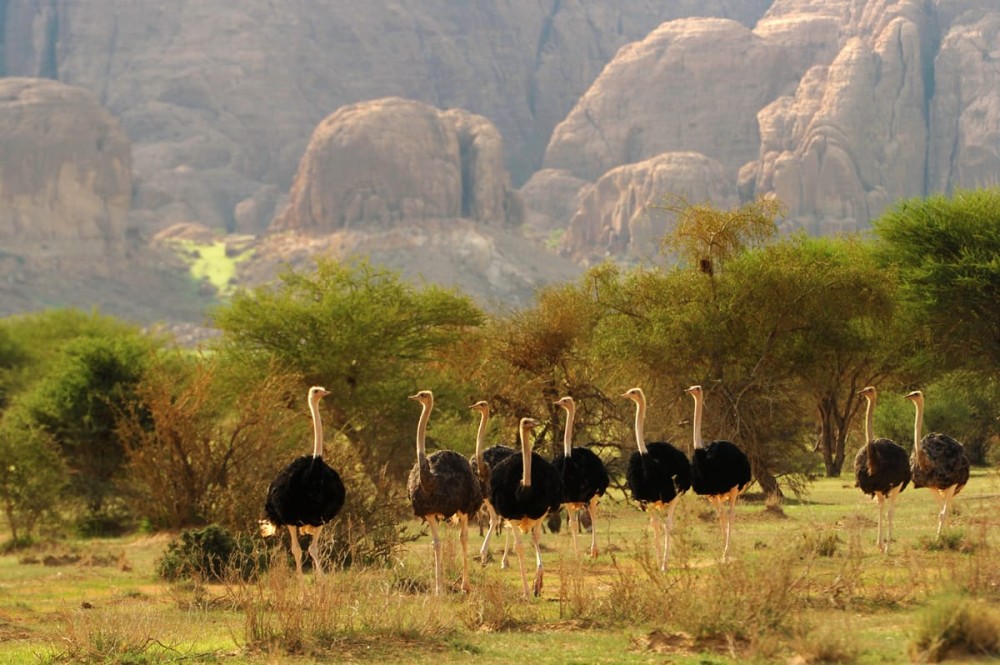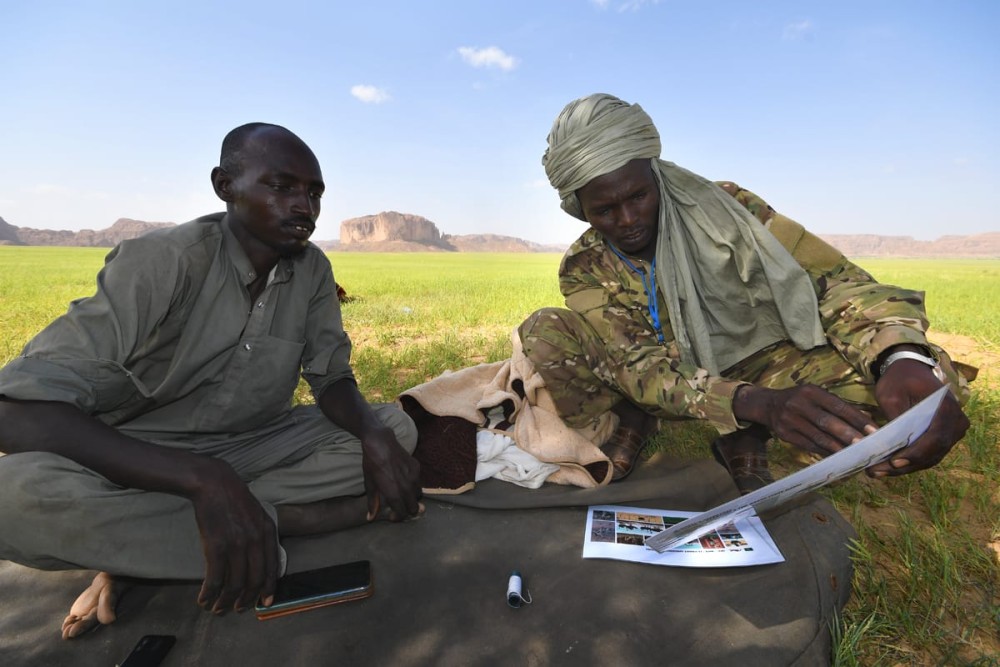Straddling the Sahelian and the Saharan areas of north-east Chad, Ennedi Massif is a water-rich desert landscape associated with the presence of large ephemeral streams and semi-permanent pools of water, or gueltas. This water gives life to the desert, enabling Ennedi to support an astonishing diversity of life, including over 525 species of flora.
A local convention for the management of the Guelta d'Archei was signed in 2023 between African Parks and the local authorities. As one of the most famous gueltas in the Sahara, the unique ecosystem of Guelta d'Archei – where wildlife and local residents have gathered for thousands of years – has been coming under pressure in recent years. After an initial report, led by an external specialist anthropologist and funded by the EU, emphasised the need for action, African Parks and local representatives worked together to draft a convention proposal for the protection of the Guelta’s biodiversity and of the last population of West African crocodiles in the Reserve, which reside in the waters. Under this new agreement, actions are being put in motion to reduce human impact and preserve this magical place, known as “the true Eden of the Sahara”.
Ennedi’s wildlife populations are a management priority, involving several measures including regular ecological data collection and long-term monitoring of key species, and the reintroduction of locally extinct emblematic species. Chad is home to the only viable populations of both red-necked ostrich and a resident population of desert crocodile; in-situ conservation for both species is essential to their survival.
Species Restorations

Additional red-necked ostrich were reintroduced to bolster the existing population. Eighteen ostrich chicks hatched in 2022, and in August, eight ostriches were released into the reserve from the Aloba Plain prelease site area. Twenty-five ostriches now exist in the reserve and seven in Sougounaw Ostrich Farm in Fada, where they are raised before being released into the wild. A study is currently underway to explore the possibility of introducing more desert crocodiles.
Monitoring and Surveys
Through a combination of aerial counts, camera trapping and surveys of fauna, including small mammals, fish, amphibians, reptiles and insects, more than 60 additional species were identified in Ennedi in 2022. All the reserve’s major taxonomic groups were inventoried, and an ecological diagnosis drawn up for each, including an assessment of conservation issues, threats and management measures. Vegetation monitoring using an enclosure, remote-sensing and field surveys helped to validate the suitability of the reserve for the reintroduction of oryx and addax.
Conservation Law Enforcement
 © Michael Viljoen
© Michael ViljoenEffective protection measures have been implemented to protect Ennedi’s large mammals, which are still subject to poaching pressure. Key threats to Ennedi currently include the hunting of Barbary sheep and dorcas gazelles; conflict between herders and carnivores including striped hyaena and golden jackal arising from predation on livestock; unsustainable livestock and farming practices such as overgrazing; wood harvesting; unregulated vehicle activities; and degradation of archaeological sites.
African Parks is investing heavily in several measures to counteract these threats. Key among them is establishing a well-trained and equipped conservation law enforcement team to carry out monitoring, patrols and surveillance. In addition, needed infrastructure and communication systems are being established. Importantly, all efforts are coordinated through close collaboration with local communities and regional authorities.
To improve communication and team monitoring on the ground, a control room has been activated with rangers working in rotation. Camel patrols monitor the reserve’s least accessible areas, particularly in the mountains, a prime habitat for Barbary sheep, which are highly prized by poachers.
